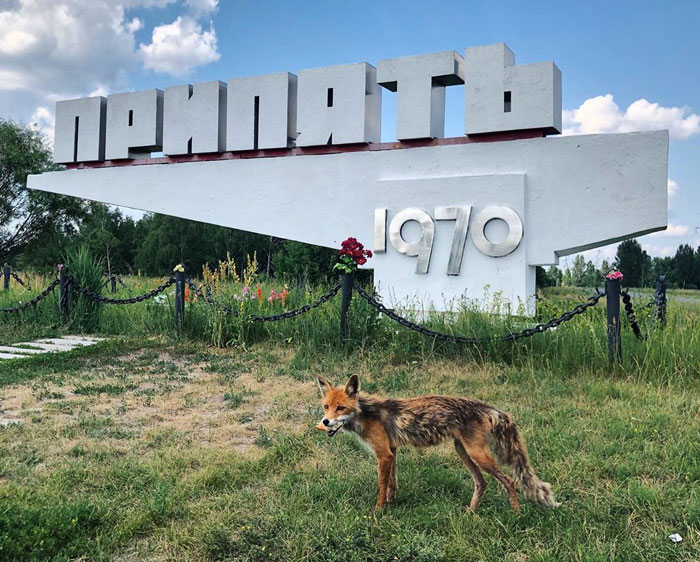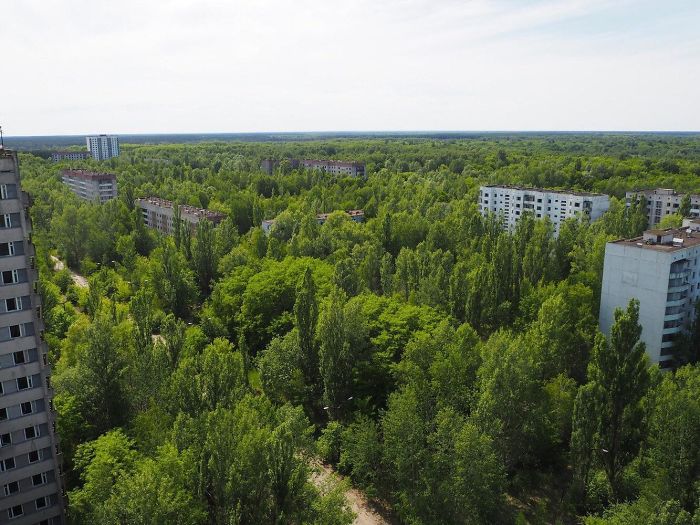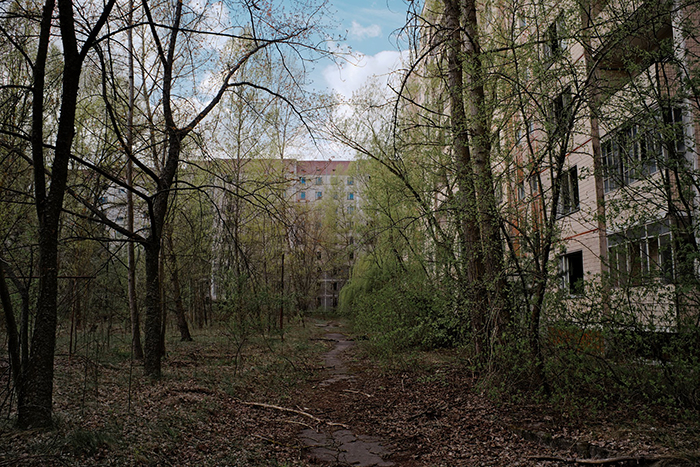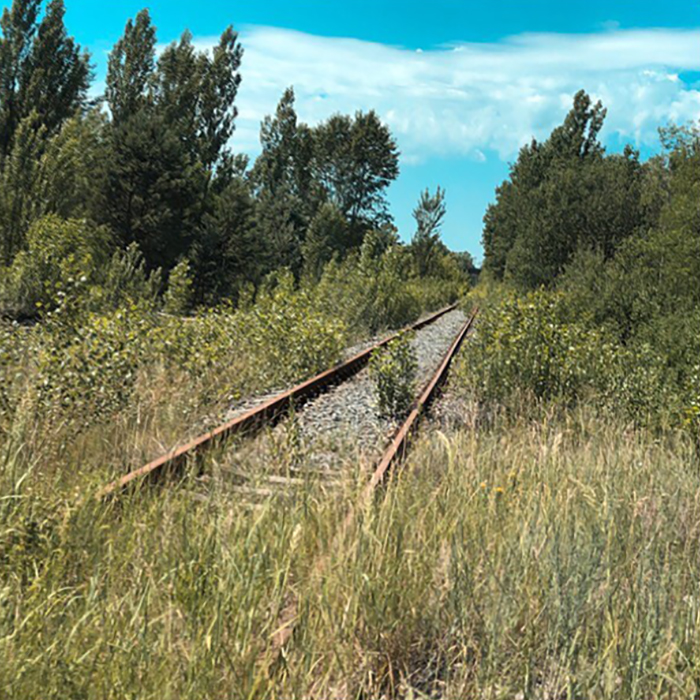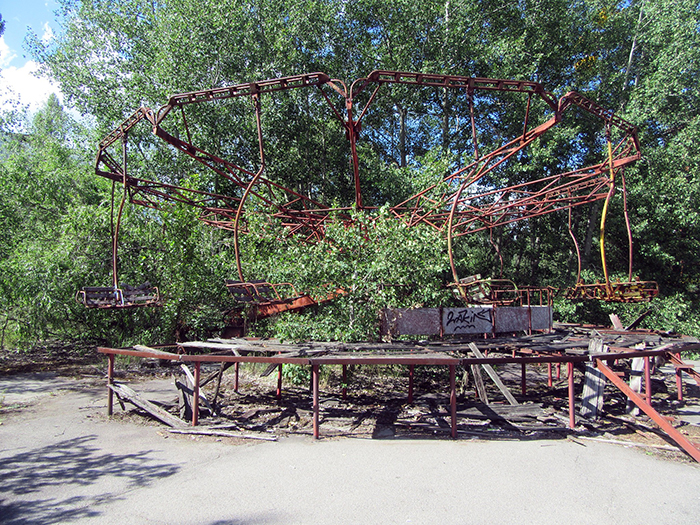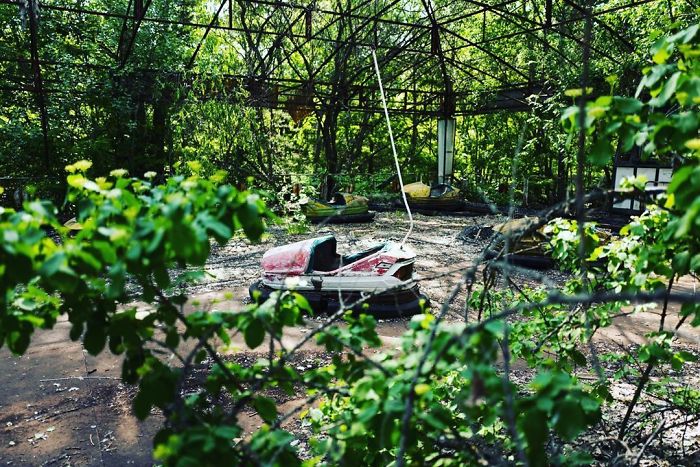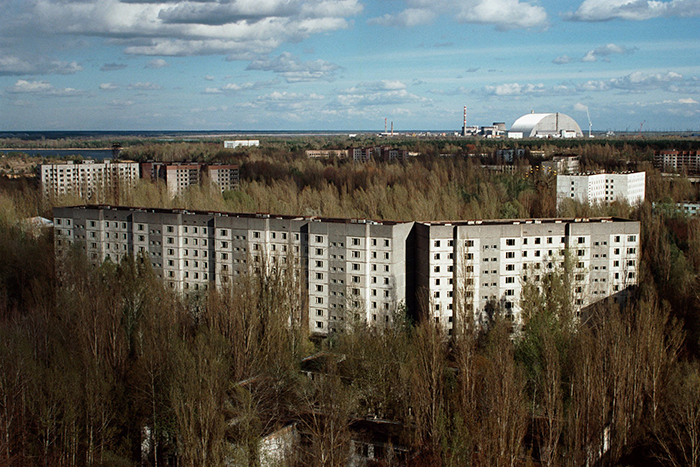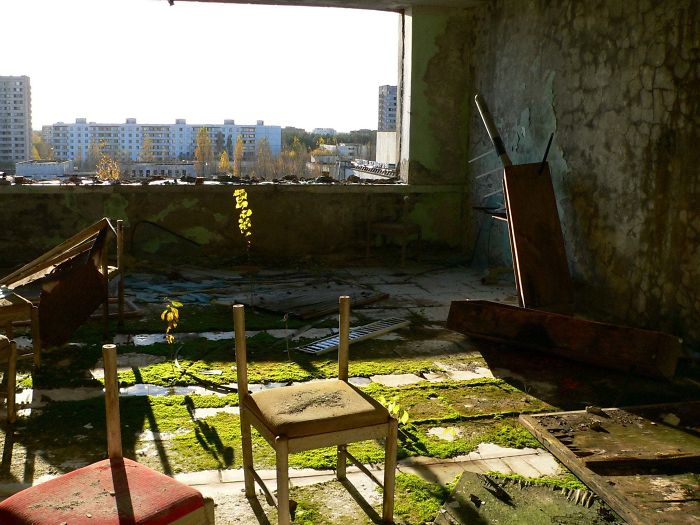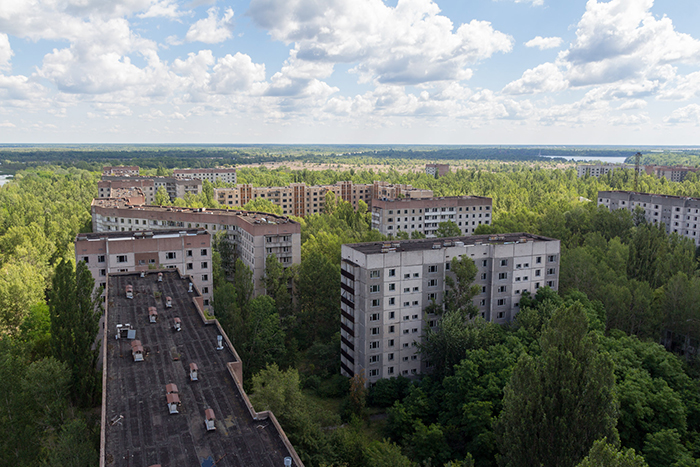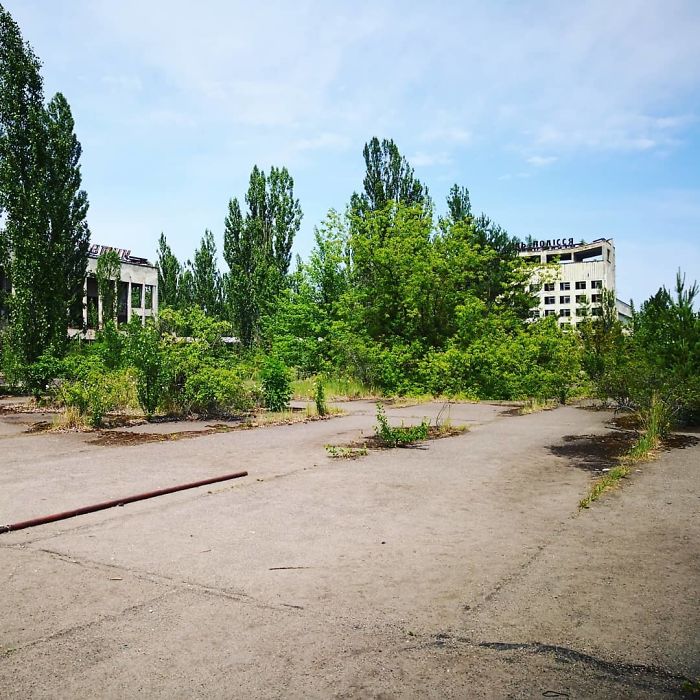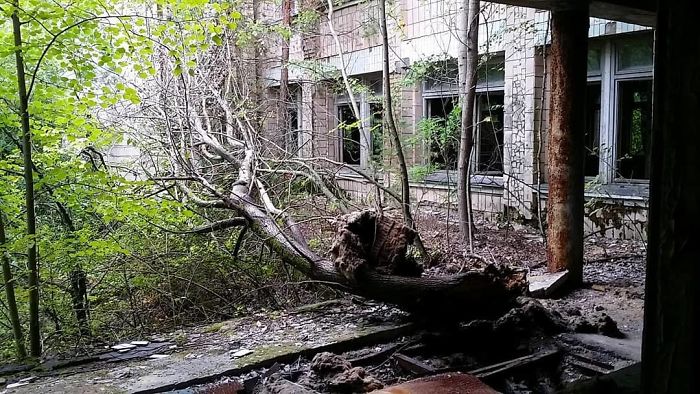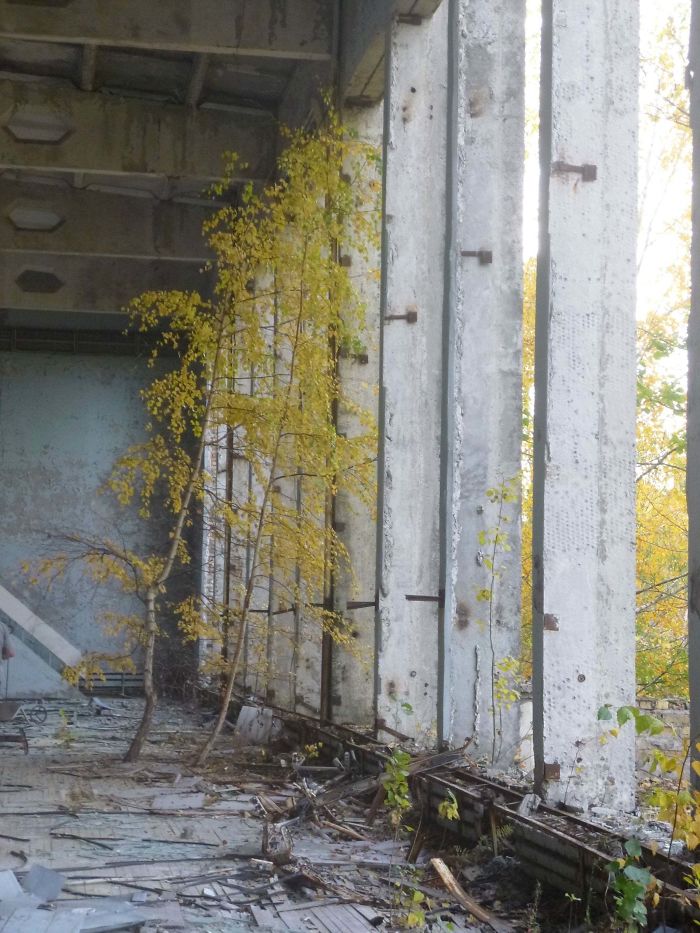
85Kviews
30 Photos Of Nature Winning The Battle Against Civilization In The Exclusion Zone Around Chernobyl
The world's worst nuclear energy disaster took place at Chernobyl nuclear power plant in Pripyat, Ukraine back in 1986, and its effects are still being felt today. A 30-km (19-mile) exclusion zone is in place around the Chernobyl disaster site, which is still highly contaminated with the radiation released following the accident.
While not fit for human habitation, wildlife has made a remarkable comeback in the exclusion zone; there are said to be more than 60 different types of mammals living there including wild boar and elk. Wolves are doing especially well, with a population that is seven times the size of wolf populations in neighboring reserves.
Far from becoming the barren wasteland that many predicted after the catastrophic nuclear explosion the area has, in the absence of humans, become host to a great biodiversity. It really shows the power of nature to recover when left alone without us around to get in the way of things!
Proof of this can be seen in this fascinating list compiled by Bored Panda. Marvel at the way that grey concrete blocks are gradually giving way to greenery, as plants and trees slowly engulf the urban decay of the former Soviet town. You can also meet some of the local wildlife celebrities, who are looking remarkably healthy considering the highly contaminated land around them.
So scroll down below to see Mother Nature majestically reclaiming her territory, and let us know what you think about these interesting photos in the comments!
This post may include affiliate links.
I Finally Met The Famous Pripyat Fox Simon
The accident at Chernobyl was caused by human error. According to Reuters, facility operators, in violation of safety regulations, had switched off important control systems at the plant’s reactor number four and allowed it to reach unstable, low-power conditions.
A power surge led to a series of blasts, at 1.24 a.m., which blew off the reactor’s heavy steel and concrete lid and sent a cloud of radioactive dust billowing across northern and western Europe, reaching as far as the eastern United States. The cloud of radioactive strontium, caesium and plutonium affected mainly Ukraine and neighboring Belarus, as well as parts of Russia and Europe.
Meet Simon, The Red Fox Of The Radioactive Red Forest
....uhh is that the same fox? Do they grow winter coats? Does Simon just refer to all red foxes seen in the area? Many questions...
Tree Growing On The 8th Floor
The Chernobyl Forum, a group of eight U.N. agencies, and the governments of Ukraine, Belarus and Russia, have estimated the death toll at only a few thousand as a result of the explosion.
U.N. agencies have said some 4,000 people will die in total because of radiation exposure.
However, the environmental group Greenpeace puts the eventual death toll far higher than official estimates, with up to 93,000 extra cancer deaths worldwide, while the Chernobyl Union of Ukraine, a non-government body, estimates the present death toll from the disaster at almost 734,000.
Today Our Team Came Across The Burial Site Of A Beloved Pet In Chernobyl
I would think that there a few people living inside the exclusion zone. That feed the cats now and then. Perhaps people on the run and hiding out or little old lady who simply wouldn't leave. Or perhaps live just over the boundary and they check on things now and then
Nature Taking Over Pripyat. What Is The Cost Of Lies?
"Look at my works, ye mighty, and despair" -Ozymandias, Percy Bysshe Shelley, 1818
The disaster was the object of a cover-up by secretive Soviet authorities who did not immediately admit to the explosion.
Eventually, a make-shift cover — the ‘Sarcophagus’ — was built, in the six months after the explosion. It covers the stricken reactor to protect the environment from radiation for at least 30 years. This has now developed cracks, triggering an international effort to fund a new encasement. Radioactive nuclear fuel is still being removed from the plant today.
Przewalski's Horses
A group of Przewalski's horses grazing in the Chernobyl Exclusion zone. In the background the New Safe Confinement ("Sarcophagus 2") can be seen.
An Old Phone Box Hidden Away In The Undergrowth In Pripyat. Unused Since 1986
strangely nice idea, an phone-box in the middle of nowhere, maybe the forest spirits needs to make calls time to time
But how have plants and animals survived and flourished despite the high levels of radiation? It is true, radiation does have real, harmful effects on flora and fauna, and may shorten the lives of individual plants and animals. But if life-sustaining resources are in abundant enough supply and burdens are not fatal, then life will flourish.
According to Science Alert, the burden brought by radiation at Chernobyl is less severe than the benefits reaped from humans leaving the area. The Chernobyl exclusion zone is now "essentially one of Europe's largest nature preserves, the ecosystem supports more life than before, even if each individual cycle of that life lasts a little less."
"In a way, the Chernobyl disaster reveals the true extent of our environmental impact on the planet. Harmful as it was, the nuclear accident was far less destructive to the local ecosystem than we were. In driving ourselves away from the area, we have created space for nature to return."
Nature Wins The Battle Against Civilization
30 Years Later, Pripyat Has Turned Into A Sort Of Nature Reserve
Overgrown House In Zalissya (Village Inside Chernobyl Exclusion Zone)
Nature Wins The Battle Against Civilization
The Buildings In Pripyat Have Not Received Maintenance For More Than 30 Years, Here In The Hospital The Dereliction Is Obvious
Pripyat Hospital
A very huge building in Pripyat. In the basement lies the clothes of firemen who where first to the accident site after the meltdown. The room with the clothes is one of the most radioactive spots in the whole exclusion zone
Chernobyl - Children's Camp "Emerald"
Chernobyl Bus Station
May 2019
Pripyat Is No Longer The Ghost Town What It Was. Now It Is Consumed By The Forest And Plants. Nature Persistently Takes It Back
Pripyat - River Boat
Pripyat - The Ghost City Crowned By Sweet Silence And Beautiful Wild Nature
Duga Radar
This one is a problem, because it's a steel lattice structure that has been exposed tot he elements without maintenance for the last 33 years and been recently the target of scrap scavengers. It's only a matter of time until some critical joint will be corroded enough to give way (especially if some other bits have been haphazardly harvested) and then it will all come down suddenly, without warning. With increased tourist activity in the Zone, including people climbing the structure, I fear it's quite possible someone might be injured or killed. So please, if you go to Chernobyl... stay away from this thing, or at least be aware it might collapse. I know what I'm talking about, I'm an architect and I nearly fell 10m to my death while visiting an abandoned prison when the walkway I was on collapsed suddenly, even though I had walked on it 5 minutes earlier and it seemed fine.
Hospital
Chernobyl Exclusion Zone
Pripyat
Pripyat - Palace Of Culture "Energetik"
Visited Chernobyl. The Overgrown Amusement Park Of Pripyat!
Pripyat
Residence Hall For The Plant Workers
Overgrown Building
Overgrown Rails. Nature Takes Everything Back
Glad nature has reclaimed this place. It all looks like garden art. Now animals have some shelter.
Looking At The Chernobyl Power Plant From Pripyat
I always thought growing up after a nuclear disaster nothing would grow. It still amazes me the life that has taken over.
Your comment reminded me of a scene in Hadashi no Gen (a film about the bombing of Hiroshima based on the original manga of a survivor), when the main character witnesses rice starting to grow again and, with his friend, they are happily celebrating the discovery (they're little kids, btw) saying something like "it was said the rice wouldn't grow for years to come".
Load More Replies...If there's a wall to be built, should be round here, to avoid animals get affected by radiation. Influencers... not much concerned about them.
I always thought growing up after a nuclear disaster nothing would grow. It still amazes me the life that has taken over.
Your comment reminded me of a scene in Hadashi no Gen (a film about the bombing of Hiroshima based on the original manga of a survivor), when the main character witnesses rice starting to grow again and, with his friend, they are happily celebrating the discovery (they're little kids, btw) saying something like "it was said the rice wouldn't grow for years to come".
Load More Replies...If there's a wall to be built, should be round here, to avoid animals get affected by radiation. Influencers... not much concerned about them.

 Dark Mode
Dark Mode 

 No fees, cancel anytime
No fees, cancel anytime 


